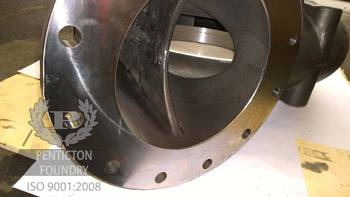The Differences Between Ni-Hard and Chrome White Iron
on August 16, 2017Exploring Ni-Hard and ASTM A532 Class II and III
Ni-hard is also called ASTM A532 Class I Type A. This blog explores the differences between Ni-hard and ASTM A532 Class II and III in an easy-to-read chart form. Microstructure differences will be examined and application suggestions made.

|
Ni-hard |
High Chrome White Iron |
|
Specification: ASTM A532 Class I |
Specification: ASTM A532 Class II and III |
|
Microstructure: Cementitic iron that solidifies as austenite with Fe3C carbides |
Microstructure: Solidifies through the eutectic point, forming an iron-rich metallic phase (that is mostly martensite) along with M7C3 chromium carbides |
|
Ni-hard Type A is the least expensive of the Ni-hard alloys, and the most common. It is usually specified for use when combating abrasion only. |
When impact is an issue, it is better to select a high chrome white iron. Class II alloys are considered to have the highest toughness of the chrome white iron alloys. |
|
Ni-hard Type B can replace Type A if more toughness is required. |
Again, the chrome white iron class II alloys will have a higher toughness than Ni-hard A, B or D. Plus, the high chrome white iron will be more corrosion resistant. |
|
Ni-hard Type D is the toughest of the Ni-hard grades, as well as the most corrosion resistant. It is, however, also the most expensive. |
The high chrome white iron class III alloys have the highest level of chromium.They are the most corrosion resistant of the ASTM A532 alloys. Their toughness is slightly less than the class II alloys, but higher than the Ni-hard alloys. |
|
Applications Type A is for low cost parts that are not exposed to high dynamic stresses:
Type B is for parts subjected to more impact like crusher plates.
Type D is for parts subjected to more severe conditions, like pump casings for corrosive slurries. |
Applications Class II is for parts subjected to a high level of impact:
Class III is the workhorse of the chrome white iron alloys and is used for parts in many industries. Applications include:
If you want to see more images of chrome white iron parts, check out our Gallery |
For more information on chrome white iron, read our abrasion resistant alloys page.
Click this link to learn more about Ni-hard’s physical and mechanical properties.

